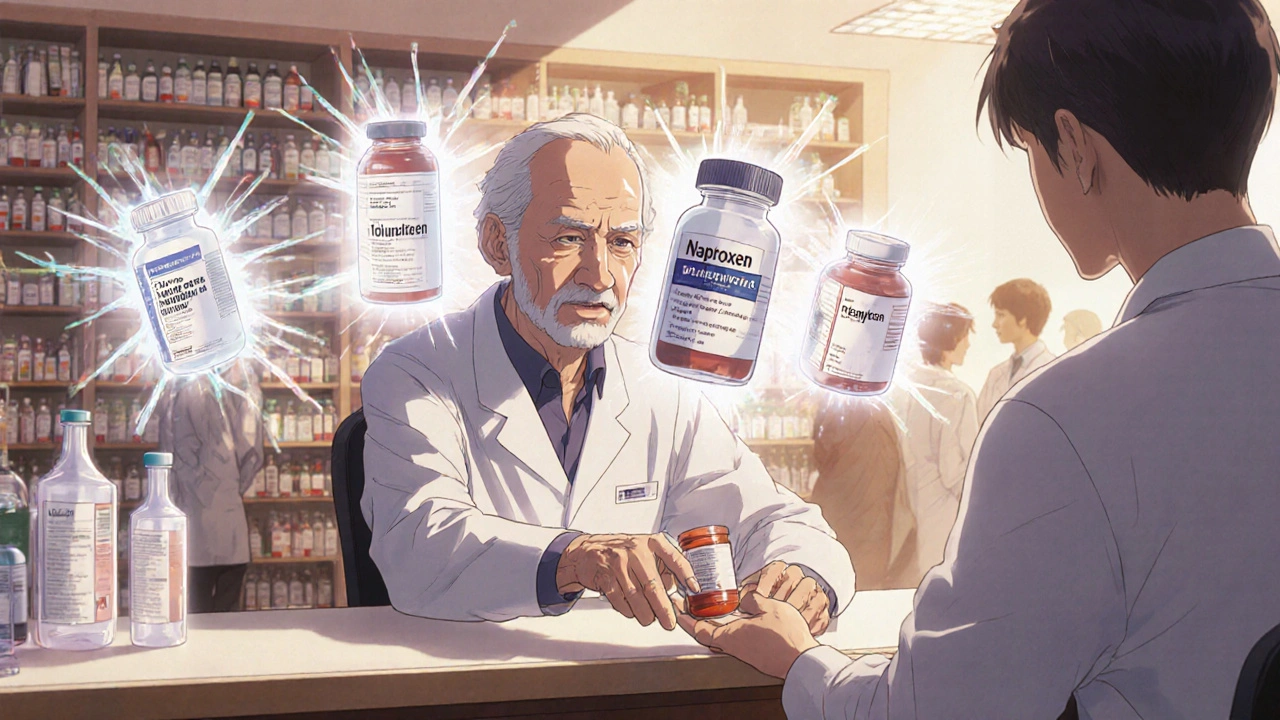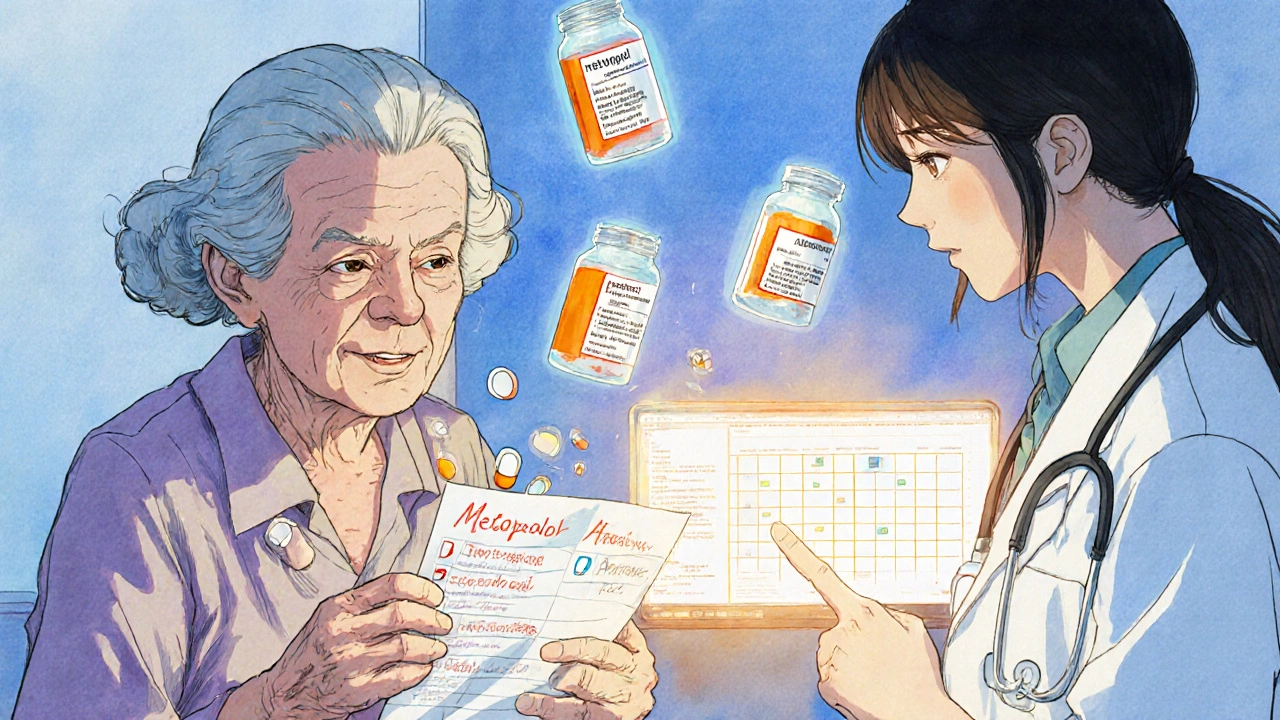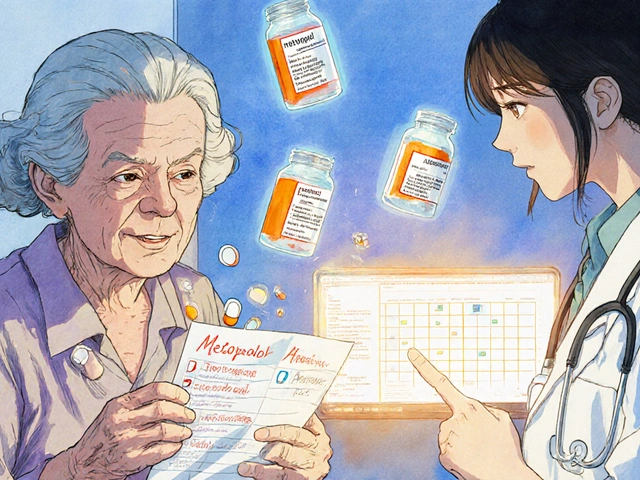Every year, thousands of seniors end up in emergency rooms because they took two pills that did the same thing. Not because they were careless. Not because they didn’t listen. But because duplicate medications slipped through the cracks between specialists, primary care doctors, and pharmacies. It’s not rare. It’s not an accident. It’s a system failure - and it’s preventable.
Why Duplicate Medications Happen to Seniors
Picture this: You’re 72. You’ve got high blood pressure, diabetes, arthritis, and maybe a bit of heart trouble. You see a cardiologist, an endocrinologist, a rheumatologist, and your GP. Each one treats their piece of your health puzzle. But no one sees the whole picture. That’s when duplicate medications happen. You get metoprolol from your cardiologist for blood pressure. Your GP already prescribed it. Two pills. Same effect. Your blood pressure crashes. You feel dizzy. You fall. That’s not just bad luck - it’s therapeutic duplication, and it’s one of the most common medication errors in older adults. According to research from the Journal of the American Medical Informatics Association, clinical systems generate over 20 duplicate medication alerts for every 100 prescriptions filled. But here’s the scary part: in 17% of those cases, the duplicate was real and dangerous. And in 32% of alerts, pharmacists had to step in to fix it. Seniors are at higher risk because they take more medications. On average, adults over 65 take five to seven prescription drugs. Add over-the-counter painkillers, vitamins, and herbal supplements - and you’re easily at ten or more. Each new specialist adds more. And unless someone’s watching the whole list, duplicates sneak in.The Hidden Dangers of Duplicate Drugs
Not all duplicate medications are obvious. You might not realize you’re getting two drugs that do the same thing because they have different names. For example:- Atorvastatin and rosuvastatin - both lower cholesterol, but taken together, they raise your risk of muscle damage.
- Acetaminophen in Tylenol and in many cold medicines - take both, and you can accidentally overdose and damage your liver.
- Two different blood thinners like warfarin and aspirin - combined, they can cause internal bleeding.
How to Protect Yourself: The Medication List That Saves Lives
The single most powerful tool you have? A real, up-to-date, complete list of everything you take. Not just prescriptions. Everything. Start with this:- All prescription drugs - name, dose, how often you take them
- All over-the-counter pills - ibuprofen, antacids, sleep aids
- All vitamins and supplements - fish oil, magnesium, turmeric, melatonin
- All herbal remedies - ginkgo, garlic pills, St. John’s wort
- Any patches, inhalers, eye drops, or creams you use daily
Use One Pharmacy - Always
Switching pharmacies might seem convenient. But it’s dangerous. Pharmacists are trained to catch duplicate medications. But they can only do that if they see your full history. If you fill prescriptions at CVS for your blood pressure, Walgreens for your diabetes meds, and a local pharmacy for your painkillers - no one has the full picture. You’re creating blind spots. Pick one pharmacy. Stick with them. Even if it’s a bit farther away. Let them build your profile. They’ll flag duplicates before you even leave the counter. In fact, a 2023 U.S. Pharmacist report showed that when pharmacists are integrated into primary care teams and have full access to a patient’s meds, emergency visits and hospital readmissions drop sharply.
Ask the Right Questions at Every Visit
Don’t just say “Thanks, doc.” Ask:- “Why am I taking this?”
- “Is this new medicine replacing something I’m already on?”
- “Could this interact with anything else I’m taking?”
- “Can you check if this duplicates something my other doctor gave me?”
Use Technology - But Don’t Rely on It
Electronic prescribing systems should warn doctors when they’re about to prescribe something you’re already taking. But they don’t always work. A 2023 study from the Patient Safety Journal found that providers often override alerts - especially if they’re busy or if the system doesn’t show the full picture. That’s why you can’t just wait for the computer to catch it. Use apps like Medisafe or MyTherapy to track your meds. Take photos of labels. Sync them with your phone. Some apps even let you share your list directly with your doctor via secure messaging. New AI tools are being tested at places like Mayo Clinic. These systems analyze your visit notes and prescriptions to spot hidden duplicates. In trials, they improved detection by over 140%. But these aren’t everywhere yet. So don’t wait for tech to save you. Be the one who checks.What to Do If You Already Have a Duplicate
If you suspect you’re taking two drugs that do the same thing - don’t stop either one on your own. That’s dangerous. Instead:- Write down both drug names and why you think they’re duplicates.
- Call your primary care doctor - not the specialist who prescribed the new one.
- Ask: “I think I might be getting two medicines that do the same thing. Can we review them together?”
- Bring your full medication list and your pill bottles.
Medication Reconciliation: The Official Safety Net
The Joint Commission requires hospitals and clinics to do “medication reconciliation” every time you transition care - when you’re discharged from the hospital, when you see a new specialist, even when you move to a new care facility. That means someone should compare your current meds with what’s being ordered. But it doesn’t always happen. That’s why you need to speak up. Before you leave any appointment, ask: “Will you be reconciling my medications today?” If they say no, ask why. If they say yes, make sure they use your list - not what they think you’re taking.
Real Stories, Real Risks
One woman in Sydney, 78, was prescribed both lisinopril and valsartan - two different blood pressure drugs that work the same way. Her cardiologist didn’t know her GP had already started her on lisinopril. She ended up with dangerously low blood pressure. She passed out at home and broke her hip. Another man took two different NSAIDs - ibuprofen and naproxen - for his arthritis. He didn’t realize both were painkillers. He developed stomach bleeding and needed emergency surgery. These aren’t outliers. They’re examples of what happens when no one is watching the whole list.Your Action Plan: 5 Simple Steps
1. Make your list - every prescription, OTC, vitamin, and supplement. Update it every month. 2. Use one pharmacy - no exceptions. Let them build your profile. 3. Bring your list to every appointment - even if you’ve been there before. Things change. 4. Ask two questions - “Is this new?” and “Is this replacing something?” 5. Talk to your GP - they’re your anchor. If a specialist adds something, your GP should know.When to Call for Help
If you feel dizzy, confused, nauseous, or unusually tired after starting a new medication - stop taking it and call your doctor. Don’t wait. It could be a duplicate causing a reaction. If you’re unsure whether two drugs do the same thing, call your pharmacist. They’re trained to spot this. And they’re not busy with paperwork - they’re there to help you.Final Thought: You’re the Keeper of Your Meds
Doctors and pharmacists are experts. But they can’t fix what they don’t know. You’re the only one who knows what’s in your medicine cabinet, what you’ve taken today, and how you’ve felt since your last visit. Your list isn’t just paper. It’s your safety net. Your voice. Your power. Keep it updated. Share it. Use it. It might just save your life.What should I do if I find out I’m taking two drugs that do the same thing?
Don’t stop either medication on your own. Contact your primary care doctor immediately. Bring your full medication list and your pill bottles. Ask them to review all your prescriptions and determine which one is necessary. Your GP can coordinate with your specialist to adjust your regimen safely. Never change doses or stop drugs without professional guidance.
Can over-the-counter medicines cause duplicate prescriptions?
Absolutely. Many OTC pain relievers, cold medicines, and sleep aids contain the same active ingredients as prescription drugs. For example, acetaminophen is in Tylenol and dozens of cold remedies. Taking both can lead to liver damage. Ibuprofen and naproxen are both NSAIDs - taking them together increases bleeding risk. Always include OTCs, vitamins, and supplements on your medication list - they’re just as important as prescriptions.
Why doesn’t my specialist know what my other doctor prescribed?
Many healthcare systems don’t share records fully. Specialists often only see their own notes, not your complete history. Even with electronic records, if your GP and cardiologist use different systems, or if records aren’t updated in real time, duplicates slip through. That’s why you need to carry your own list - no system is perfect.
Should I ask my pharmacist to check for duplicates?
Yes - always. Pharmacists are trained to spot duplicate therapies and dangerous interactions. When you pick up a new prescription, ask them to review your full list. Many pharmacies offer free medication reviews. Don’t assume they’ll do it unless you ask. Your pharmacist is one of your best defenses against medication errors.
How often should I update my medication list?
Update it every time you start, stop, or change a medication - even if it’s a small change. At a minimum, review it once a month. Set a reminder on your phone. Write the date on your list. Keep it in your wallet, on your phone, and with a family member. The more current it is, the safer you are.
Are there apps that help track medications?
Yes. Apps like Medisafe, MyTherapy, and Mango Health let you log all your medications, set reminders, and share your list with family or doctors. Some let you photograph pill bottles to auto-fill details. These tools are especially helpful if you forget names or doses. But remember - apps aren’t foolproof. Always carry a printed copy to appointments.


